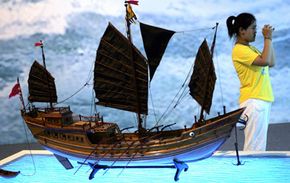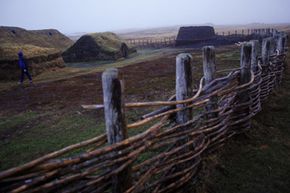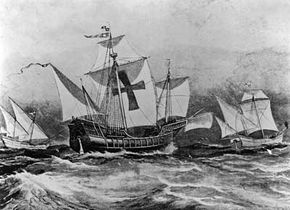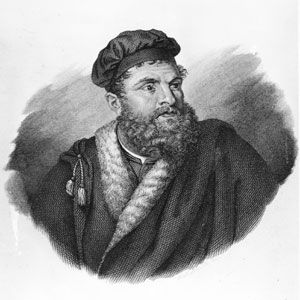
In his bestselling book, "1421: The Year China Discovered America," British amateur historian Gavin Menzies turns the story of the Europeans' discovery of America on its ear with a startling idea: Chinese sailors beat Christopher Columbus to the Americas by more than 70 years. The book has generated controversy within the halls of scholarship. Anthropologists, archaeologists, historians and linguists alike have debunked much of the evidence that Menzies used to support his notion, which has come to be called the 1421 theory.
But where did Menzies come up with the idea that it was Asians, not Europeans, who first arrived in America from other countries? It's been long held by scholars that it was people from Asia who first set foot in North America, but not in the way that Menzies describes. Sometime 10,000 years ago or more, people of Asian origination are believed to have crossed over the Bering land bridge from Siberia to what is now Alaska. From there, they are believed to have spread out over the course of millennia, diverging genetically and populating North and South America.
Advertisement
But Menzies' 1421 theory supposes much more direct influence from China. Rather than civilization evolving separately in the Americas and Asia, under the 1421 theory, China was directly involved in governance and trade with the peoples of the Americas with whom they shared their ancestry.
So what evidence does he have to support this notion? It's Menzie's belief that one merely has to refer to certain maps to see the light.
A full 30 years before Gavin Menzies published his book, Baptist missionary Dr. Hendon M. Harris perused the curiosities in a shop in Taiwan. It was there he made an amazing discovery: a map that looked to be ancient, written in classical Chinese and depicting what to Harris was clearly North America. It was a map of Fu Sang, the legendary land of Chinese fable.
Fu Sang is to the Chinese what Atlantis is to the West -- a mythical land that most don't believe existed, but for which enough tantalizing (yet vague) evidence exists to maintain popularity for the idea. The map the missionary discovered -- which has come to be known as the Harris map -- showed that Fu Sang was located exactly where North America is. Even more amazingly, some of the features shown on the map of Fu Sang look a lot like geographical anomalies unique to North America, such as the Grand Canyon.
As if the Harris map weren't suggestive enough, other maps have also surfaced. It's a specific map that Menzies points to as definitive proof that the Chinese had already explored the world long before the Europeans ever set sail in the age of exploration. This map, known as the 1418 map -- so called for the date it was supposedly published -- clearly shows all of the world's oceans, as well as all seven continents, correct in shape and situation. Even more startling is the map's accurate depiction of features of North America, including the Potomac River in the Northeast of the present-day United States.
Menzies believes that not only had the Chinese already explored the world before Columbus and other European explorers, but that it was with Chinese maps that the Europeans were able to circumnavigate the globe. Armed with the map as his flagship evidence, Menzies points out plenty of other artifacts that point to Chinese pre-Columbian occupation in the Americas. Read the next page to find out what supports his theory.
Advertisement



